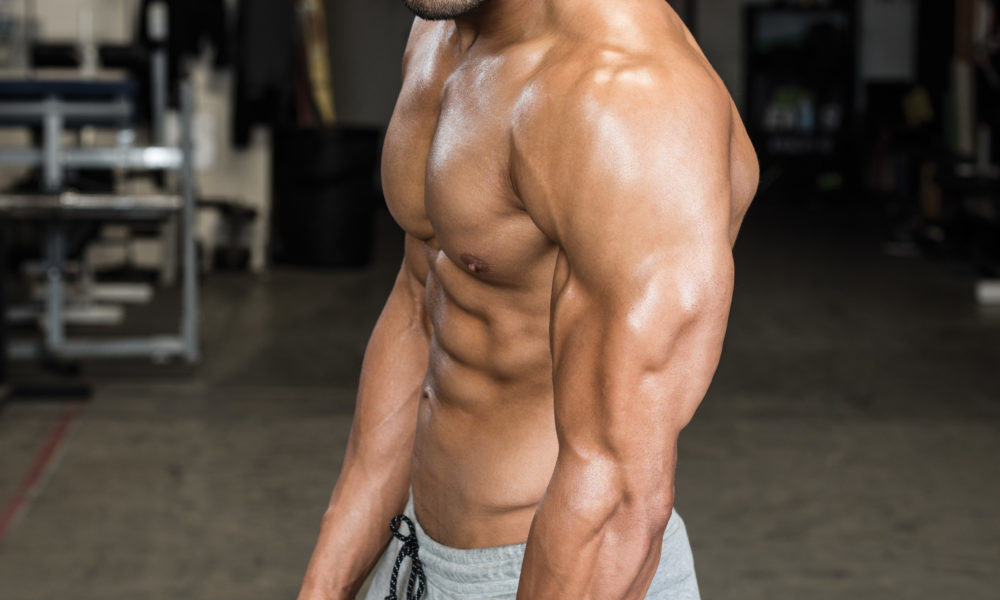

Training the back and biceps together is the perfect amount of growth-stimulating stress and recovery.
By Mike Carlson
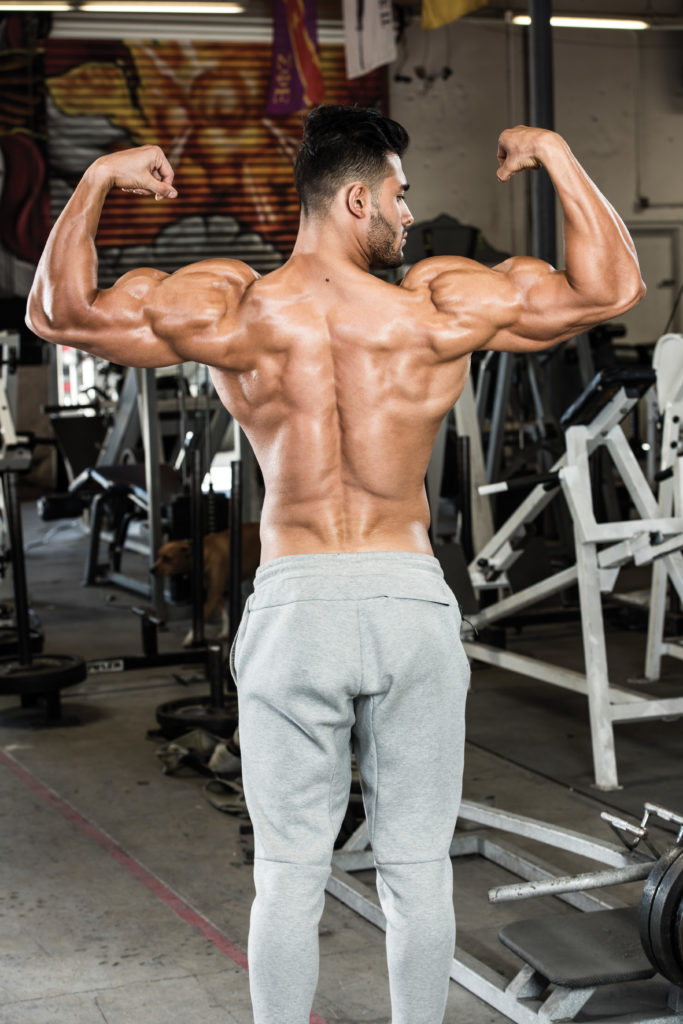
Patterns abound in nature. From the geometrical precision of a bee’s honeycomb to the spiraling fractals of Romanesco broccoli, repeating shapes occur everywhere we look, including the gym. And just like in nature, patterns in the gym have evolved over time for a simple reason: There is something about them that helps the host thrive.
Training your back and biceps in the same day is a good example. This strategy has served millions of lifters for generations. But recently we see more guys splitting their back and biceps into separate training days in an effort to spread out the stimulus. They feel that their biceps are too trashed to get in enough quality work after they’ve been collaterally damaged in sets of heavy rows, chins, and pull-downs. And they are right, to a degree. If you do one-arm rows with 120-pound dumbbells, your biceps are not going to escape unscathed. Splitting up the workouts, however, can easily invite overtraining.
When a bodypart is not growing as quickly as desired, the common course of action is often doubling down on the time and intensity you spend training it. More sets and reps is probably not the answer, though, and may be the reason why development slowed down in the first place. When you separate your back and biceps workouts, you’re going to be hitting your biceps (directly and indirectly) about four times every seven to 10 days. For many guys, that’s just not enough recovery time to allow for growth.
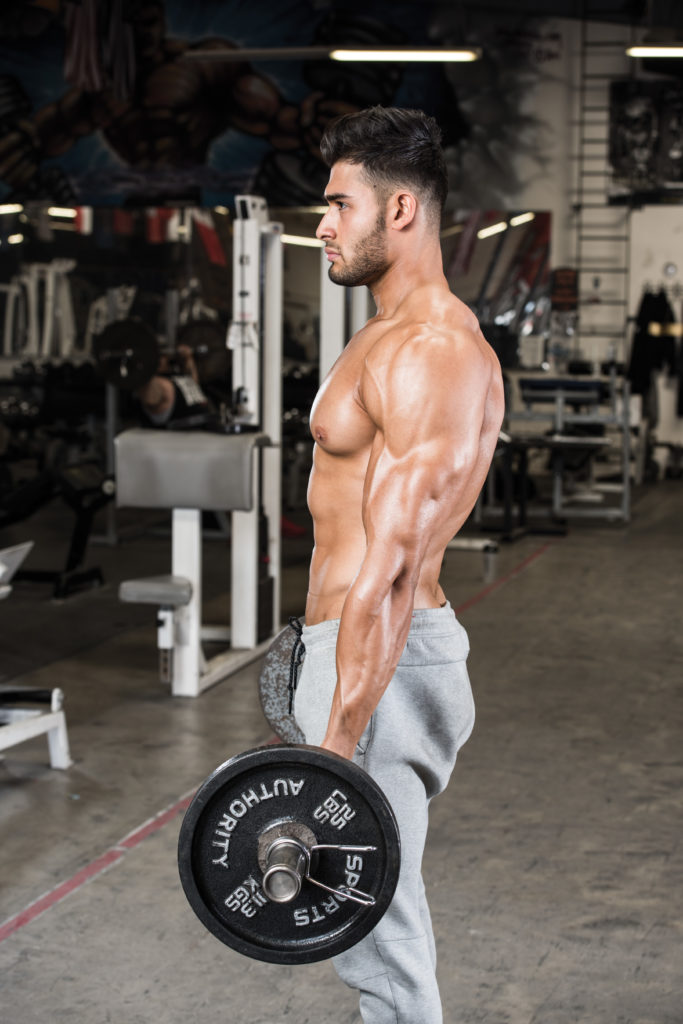
“These traditional combinations — back and bi’s, chest and tri’s —have been around a long time and have withstood the test of time,” says strength coach and kinesiologist Brian Richardson, MS, CPL2, NASM-PES, the co-owner of Dynamic Fitness in Temecula, California. “They just make sense.”
The workout here, designed by Richardson, may look traditional from the outset, but the exercises have been carefully chosen to provide the most total-body benefit.
“When you vary implements and hand positions you are not just developing muscles, but you’re teaching the ligaments and tendons to tug on bone at different angles. Then you are getting into bone density and joint health and all the other benefits we get from strength training,” says Richardson.
And even though the dedicated biceps work uses isolation movements, it doesn’t mean they offer a limited payoff. “When you do a heavy loaded standing barbell curl you get a ton of core function,” Richardson says. “It’s a great core strengthening exercise, which is good for the type of segmental stability that carries over to big lifts.” IM
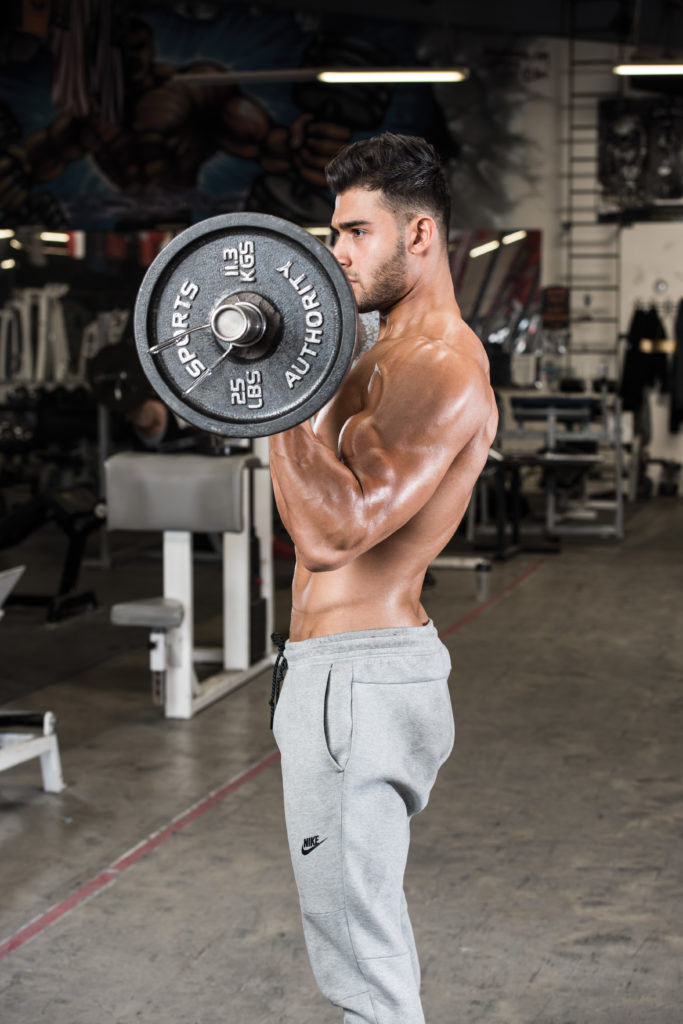
The Pull Pattern Workout0
For each exercise with a descending rep scheme, progress the resistance so the load is heavier for each successive set. The order shown here has you performing the exercises with the most demanding neurological loads first. However, you may want to switch the order for your own purpose.
“A physique competitor should always have a muscle-specific goal in his head,” Richardson, says. “If he has well-developed lats but is lacking in his biceps, I would say do the biceps work first. You want to hit your most important lifts at the beginning of the workout.”
Exercise Sets Reps
Weighted Pull-Up 4 12, 10, 8, 6-8
T-Bar Row 4 12, 10, 8, 6-8
One-Arm Dumbbell Row 4 12, 10, 8, 6-8
Dumbbell Pullover 4 12, 10, 8, 6-8
One-Arm Low-Pulley Row 4 20
Lateral Crunch* 3 15-20
Standing Barbell Curl 4 12, 10, 8, 8
Concentration Curl 4 12, 10, 8, 8
Spider Curl 4 12, 10, 8, 8
30s 2 30
* The lateral crunch, which targets a small but important muscle in the back called the quadratus lumborum, can be performed on a bench or on an exercise ball.
Weighted Pull-Up
Use a weight belt, vest, chains, or hold the post of a dumbbell between your feet in order to add 20 to 25 pounds to this lift. Grasp a bar with a wide overhand grip, wrapping your thumbs around the bar. Hang freely with your arms fully extended. Contract your lats to raise your body upward, concentrating on keeping your elbows out to your sides and pulling them down. Hold momentarily as your chin reaches the level of your hands, then lower yourself down to a dead-hang position.
T-Bar Row
While keeping your back as straight as possible, bend at your waist until your body makes a 45-degree angle. Take hold of the handles on the T-bar. Tighten your core, pull your elbows behind you, and squeeze your shoulder blades together as you pull the bar as close to your body as you can. Hold this position for a second before lowering the weight to the starting position.
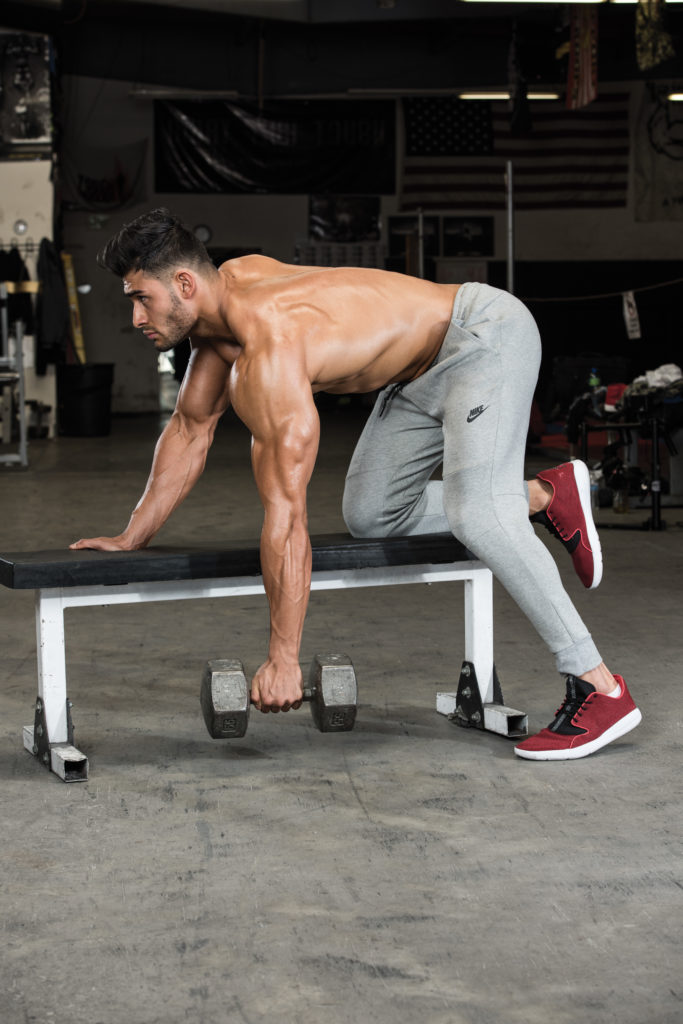
One-Arm Dumbbell Row
Grab a dumbbell with one hand and brace yourself by placing your opposite-side hand and knee on a flat bench. Let the dumbbell hang at arms’ length straight down from your shoulder. Bring the dumbbell up and slightly back toward your hip. Once you’ve pulled the weight up to your rib cage, squeeze the muscle and hold the contraction before lowering the weight to the starting position.
Dumbbell Pullover
Lie across a bench with your lower back on the bench and feet flat on the floor with legs bent 90 degrees and your hips and femur perpendicular to the ground. Hold a dumbbell at arms’ length overhead. With a slight bend in your elbows, lower the weight behind your head as far you can to stretch the lats. Bring the weight back up overhead until it’s over your chest. Repeat.
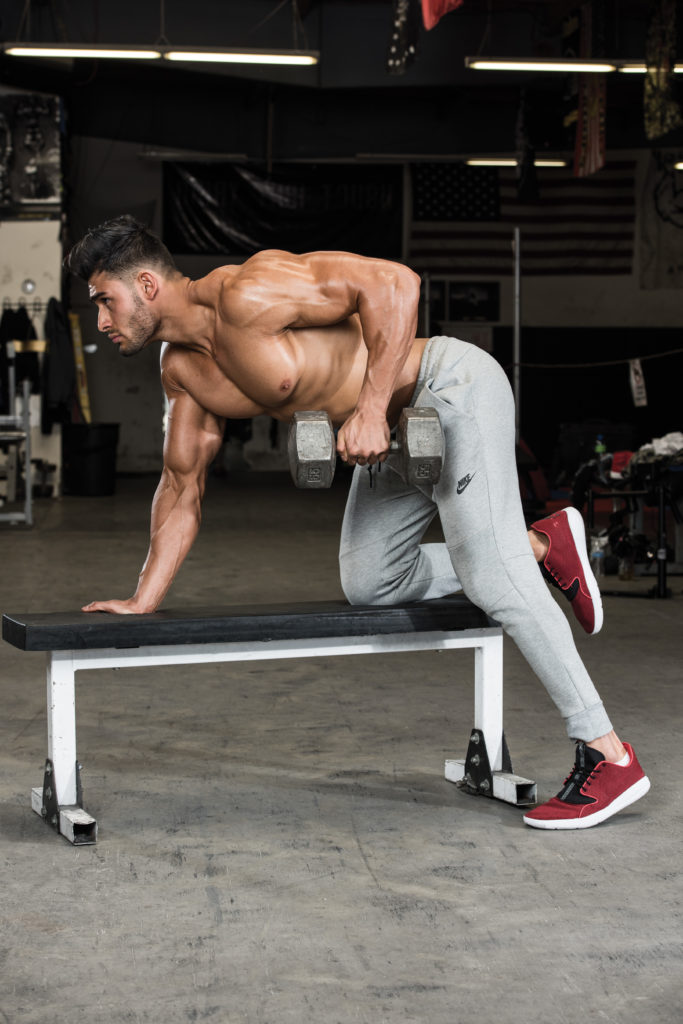
One-Arm Low Pulley Row
Place a D-handle on a low pulley and get into a bilateral stance in front of it. Bend your knees and keep your back flat as you hinge from the hips slightly and grasp the handle. Keep your back flat and head in a neutral position. Slowly pull the handle toward your body, rotating it from a palms-down grip to a palms-in grip. Place your non-working arm lightly on your hip or knee. Alternately, you can push the left arm forward and you pull with the right arms to help mobilize the thoracic spine.
Lateral Crunch
Lie on your left side across a bench or exercise ball, with your feet stacked on the floor. Go into side extension so your left shoulder comes closer to the ground. Flex your right side and bring your right shoulder toward the ceiling. To make it more challenging, keep the fulcrum (the bench or ball) closer to your hip than your lat. To do this, you may have to anchor your feet with some dumbbells.
Standing Barbell Curl
Grab an Olympic barbell with a grip that is just outside your shoulders, with your palms facing up. Let it hang in front of you. Tighten your core and retract your scapula. Keep your eyes on the horizon. Slowly curl the weight up toward your shoulders.
Concentration Curl
Sit on a bench with a dumbbell on the ground between your feet. Your feet should be flat on the floor, with your knees spread out. Pick the dumbbell up with your right hand and place your right triceps against the inner thigh of your right leg. The palm of your hand should be facing away from your right leg, with your arm extended and the weight hanging toward the floor. Making an effort to keep your upper arm completely still, contract the biceps and lift the weight. When the biceps reach peak contraction and the dumbbell is close to shoulder level, pause for a beat and then lower and repeat.
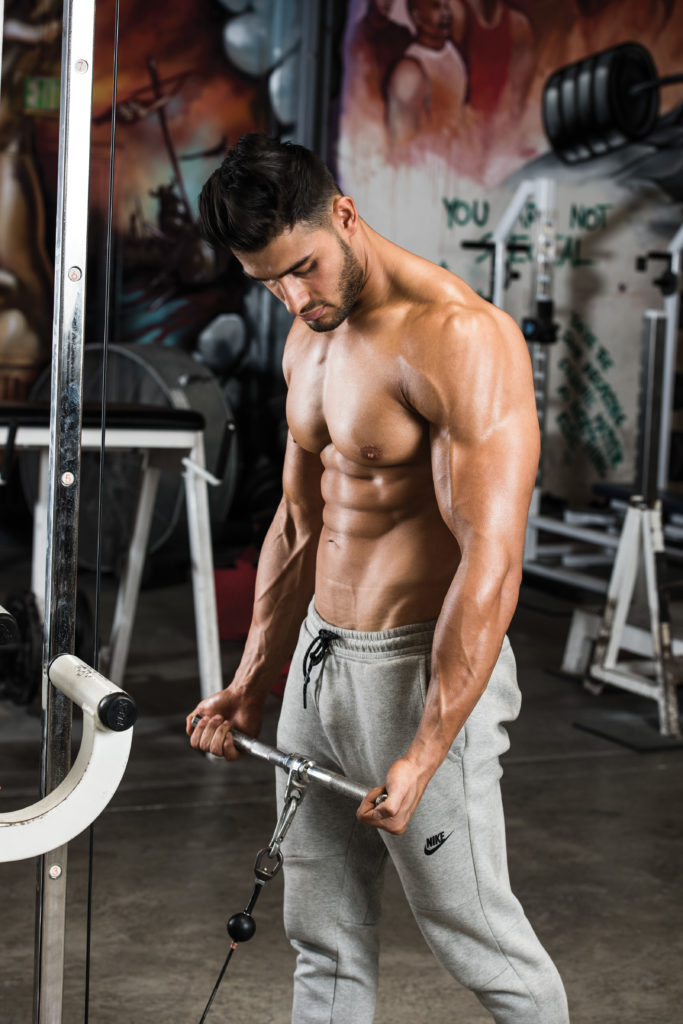
Spider Curl
Lie facedown on an incline bench with your feet on the floor behind you and chest against the pad. Hold an EZ-bar with your palms facing up and your arms extended straight down toward the floor. Curl the bar up through a full range of motion without letting your elbow flare out. When your hands are right in front of your shoulders, pause for a beat and then lower and repeat.
30s
Stand in front of a low pulley, with an EZ-bar attached to the cable. With a relatively light weight on the stack, grasp the bar in both hands with an underhand grip, and stand with your chest up and knees slightly bent. The first 10 curls are partial reps, moving the weight from the bottom to the midpoint of the rep (elbows bent 90 degrees). Moving immediately to the next 10 reps, begin at the midpoint and bring the weight to the top of the motion and then back to the midpoint. Finally, perform 10 full reps beginning with your elbows extended and finishing with your hands near your shoulders.
[Bio Box:]
Name: Sam Asghari
Age:22
Lives: Studio City, CA
Profession: Actor/model
Likes: To be an inspiration for people
Dislikes: Laziness
Favorite clean meal: Chicken with sweet potatoes
Favorite cheat meal: Pizza
Listens to: Hip-hop
Favorite movies: Remember The Titans, Scarface, The Wolf Of Wall Street
Instagram: @samasghari






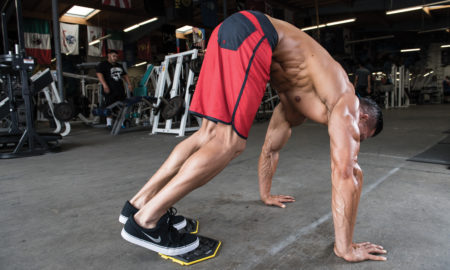
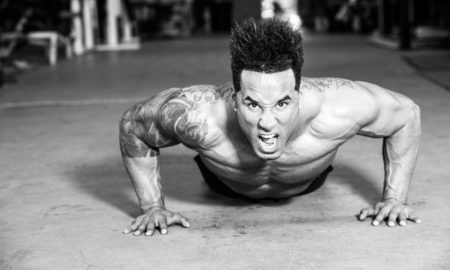














You must be logged in to post a comment Login